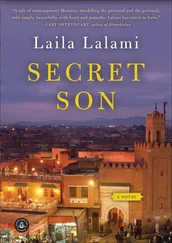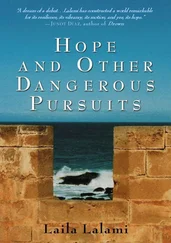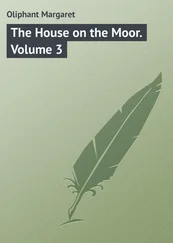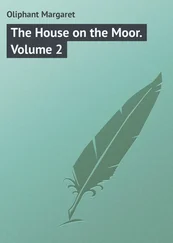What if the white man in Vacapa does not believe your story? Ahku asked.
He will, I said, if the messengers know how to tell it.
Ahku said that he had to consult with the tribe’s elders before he could make a decision. All the Indians I had met in this continent decided their affairs by consultation, so this did not surprise me. It was a practice I admired, though I hoped the cacique would make up his mind soon, because the friar was only three weeks away from the gates of Hawikuh.
Whatever Ahku decided, Oyomasot and I would leave in the morning and begin our journey home to the land of the Avavares. We would live out our lives among her people, following the routes her ancestors had taken for centuries, hunting where they had hunted, foraging where they had foraged, trading where they had traded. Our child, too, would learn these traditions. He would learn to welcome guests and fight intruders. Above all, he would learn not to put his life in the hands of another man.
Oyomasot’s hand was on my cheek. What story should I tell our child? she asked. I remembered the stories my mother had told me so often when I was a young boy. I had taken them with me when I crossed the Ocean of Fog and Darkness. I had fed on them in the terrible years of deprivation and I had used them to find my way whenever I was lost. I told them when I needed comfort or when I wanted to give it to others. The words pressed themselves against my lips now, begging to come out. I wanted to tell a story to my child, so that he might share the joy or the pain it contained, that he might learn something from it, that he might tell it after my death or after his mother’s death, even if only to pass the time. I wanted to tell him a story that he might remember me.
And in this relation I tried to tell the story of what really happened when I journeyed to the heart of the continent. The servants of the Spanish empire have given a different story to their king and their bishop, their wives and their friends. The Indians with whom I lived for eight years, each one of them, each one of thousands, have told yet other stories. Maybe there is no true story, only imagined stories, vague reflections of what we saw and what we heard, what we felt and what we thought. Maybe if our experiences, in all of their glorious, magnificent colors, were somehow added up, they would lead us to the blinding light of the truth. To God belong the east and the west, whichever way you turn, there is the face of God. God is great.
The speech read by the notary of the Narváez expedition in Chapter 1 is a shortened and modified version of the Requerimiento, a legal justification drafted by the Spanish jurist Juan López de Palacios Rubios in 1513. It was used in every Spanish expedition to the Americas from that year until its abolishment in 1556. It was read to indigenous tribes when they were present, but their presence was not required. The signed document was then sent back to Spain. The text of the Requerimiento is in the public domain, but for an analysis see “The Requerimiento and Its Interpreters” by Lewis Hanke in Revista de Historia de América.
The Narváez expedition was famously chronicled by Cabeza de Vaca in a travelogue addressed to and dedicated to King Charles V, and which was later published as La Relacíon. An excellent English translation by Fanny Bandelier, revised and annotated by Harold Augenbraum, is available from Penguin Classics under the title Chronicle of the Narváez Expedition. That edition has the additional blessing of an introduction by Ilan Stavans.
In researching this novel I have relied on many sources, but I would like to acknowledge, in particular, The Travels of ibn Battuta; The Conquest of New Spain by Bernal Díaz; The Karankawa Indians: The Coast People of Texas by Albert Gatschet; Crossing the Continent, 1527–1540: The Story of the First African-American Explorer of the American South by Robert Goodwin; We Came Naked and Barefoot: The Journey of Cabeza de Vaca Across North America by Alex D. Krieger; A Land So Strange: The Epic Journey of Cabeza de Vaca by Andrés Reséndez; and The History and Description of Africa by Hassan al-Wazzan (Leo Africanus.)
Although I have based this novel on actual events, the characters and situations it depicts are entirely fictional. This is especially true of my protagonist, about whose background nothing is known, except for one line in Cabeza de Vaca’s relation: el cuarto [sobreviviente] se llama Estevanico, es negro alárabe, natural de Azamor. (“The fourth [survivor] is Estevanico, an Arab Negro from Azamor.”)
I am grateful to the Lannan Foundation for a residency in Marfa, Texas, and to Hedgebrook for a stay on Whidbey Island in Washington. For their comments on an earlier draft of this book, I owe many thanks to Kirsten Menger-Anderson, Kevin McIlvoy, Maaza Mengiste, Souad Sedlik, and Jane Smiley. Special thanks to Tom R. Kennedy for the long conversation about Hawikuh. I am particularly indebted to my agent, Ellen Levine, whose faith in me is unwavering, and to my editor, Erroll McDonald, whose guidance made all the difference. Thank you most of all to Alexander Yera, who makes all of my work, and indeed my life, possible.
Laila Lalami was born and raised in Morocco. She is the author of the short story collection Hope and Other Dangerous Pursuits , which was a finalist for the Oregon Book Award, and the novel Secret Son, which was on the Orange Prize longlist. Her essays and opinion pieces have appeared in the Los Angeles Times, The Washington Post, The Nation, The Guardian, The New York Times , and in numerous anthologies. She is the recipient of a British Council Fellowship, a Fulbright Fellowship, and a Lannan Foundation Residency Fellowship and is currently an associate professor of creative writing at the University of California at Riverside. She lives in Los Angeles.
www.lailalalami.com












